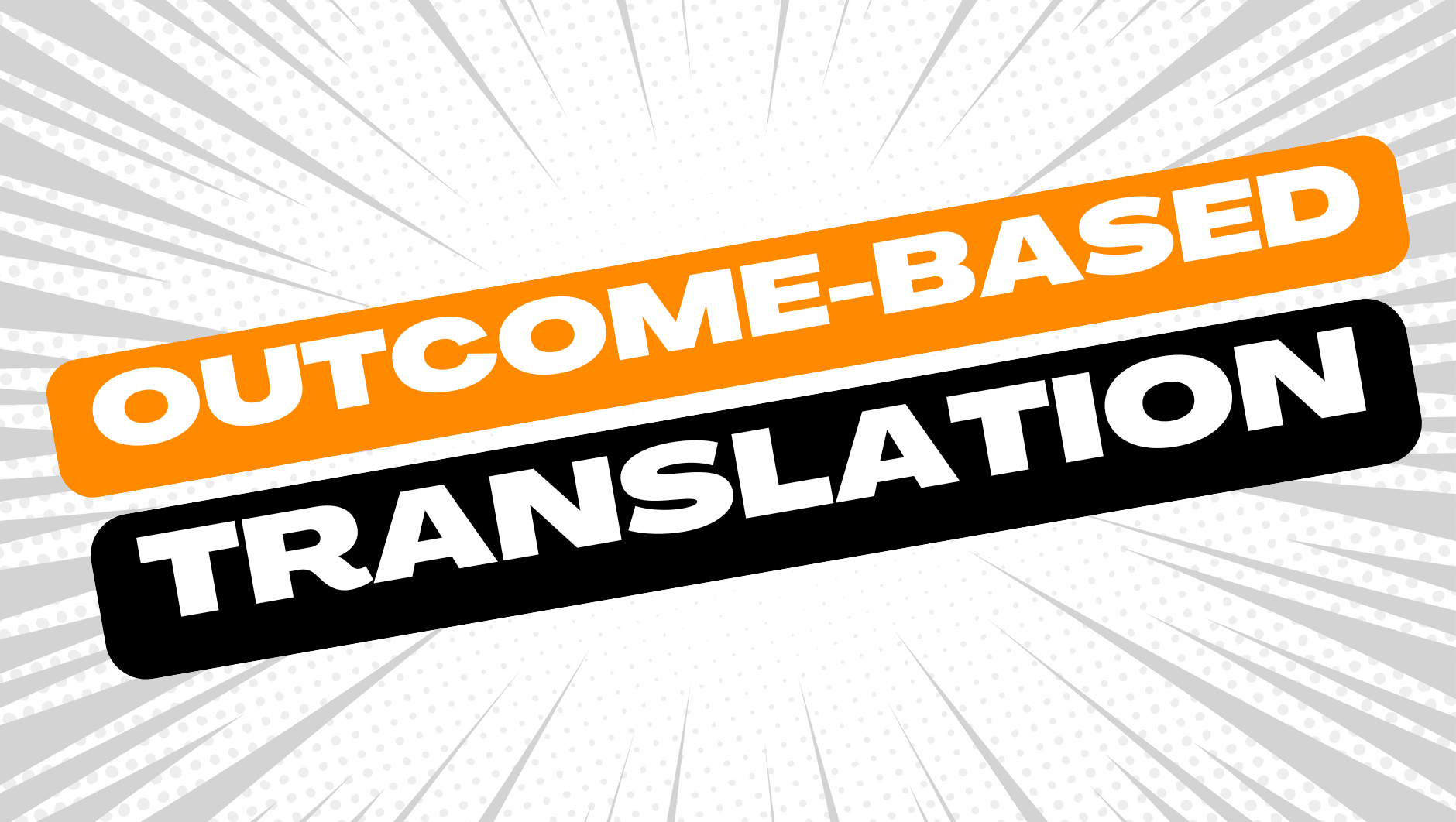In my XITL presentations and discussions in recent months, I have frequently mentioned outcome-based translation. I use it to highlight why human translation is necessary. Frequently, I receive the argument “machine translation can deliver that in x seconds/minutes)”. A human translation of the same text might take hours/days.
However, this is due to their “one size fits all” consideration of translation. As its purpose or outcome becomes clear, investing (not spending!) time on human translation is the cheaper option.
Human translation vastly outstrips MT in terms of accountability, credibility and expertise. However, by only being reported on the expenses side of the balance sheet, the return on human translation is missed.
How human translation beats MT.
Here’s an example about something I encountered recently. I received an Excel table with raw MT titles of around 100 processes, each using an abbreviated name, grouped thematically. The table had been provided in German. We were informed about processes for review from the English raw MT. The raw MT had been used for that judgement call. It identified 50+ processes to examine more closely.
We also benefitted from the synergy of my also being a process controller. This role helps me to keep abreast of changes in underlying supervisory law for banking supervision. In turn, I can determine future translation needs (e.g. for templates related to processes for reporting to the ECB). I know our processes inside out. My colleague asked me to review the list of processes, triggering my concerns about the MT output. We both believed it had misled her counterpart.
To illustrate my concern, I cited five examples from the first block of ten processes. In all cases the MT was far enough removed to influence the request. My colleague checked with her line manager, who confirmed that I should deliver a human translated version of the table.
While a machine translation might be ready in x seconds or minutes, sometimes the same translation, done by a professional translator in a number of hours, might lead to an outcome that results in days being saved downstream.
What the translator did
I compiled the Excel table to translate – due to my translation memory the 800 words took about 90 minutes. I made sure I delivered that day as I was off the following day. Once back in the office, the response was there. The number of processes highlighted had fallen from nearly 50 to around 35.
Given that I knew what the processes achieve, I ensured in translating their titles that their context was clearer than a “word shifting” raw MT. The raw MT works at segment level only. It also only identified the combination as German > English (probably instructed). I realised that it was in fact Austrian Legal German into English.
The positive outcome
We managed to ensure the removal of fifteen processes from the scope for closer examination. We provided extra context on two newly identified processes, leading to their subsequent removal from the list.
Investing three hours of time (including checking the rationale behind the processes) saved a considerable number of hours (e.g. 15 minutes / process for coordination our side, one hour / process for drafting time for the process owner in explaining the process based on questions asked, and hours of meetings involving multiple staff members). The impact in terms of reduction in unnecessary translation was around 1,500 – 2,000 Normzeilen.
Unfortunately, other than illustrating the “Raw MT” near miss there is often not comeback on the effects of downstream expenses – unless there is resulting litigation. MT is therefore not held to account in the same way as human translation.
Further examples of outcome-based translation jobs (non-exhaustive list)
- Translation of primary and secondary legislation with quality assurance by subject matter experts. The translations are subsequently used by scores of colleagues in ongoing supervision. These translations are used to confirm that EU Regulations and Directives have been duly transposed into Austrian national legislation.
- Translations that permit the opening of court proceedings in relation to supervisory procedures or the timely conclusion of supervisory procedures in relation to supervised entities.
- Notifications of supervisory measures taken, including those requiring notification to the European Supervisory Authorities (EBA, EIOPA and ESMA).
- Translations of documents that are reused on many occasions.
- Translations that assist the correct filling of forms and tables. Explanations help supervised entities to correctly notify the supervisor.


